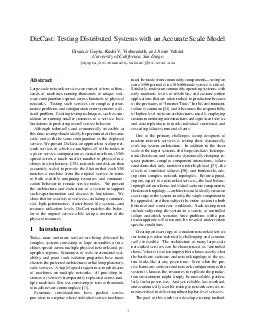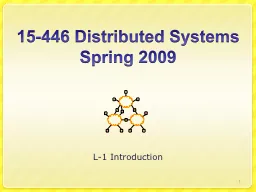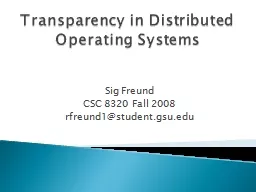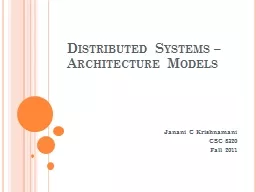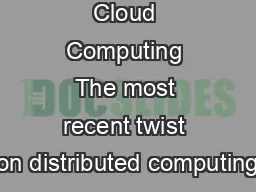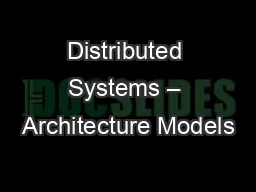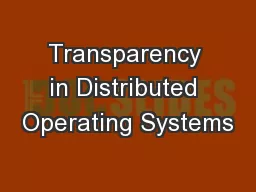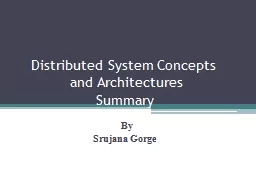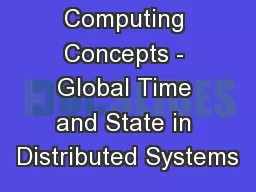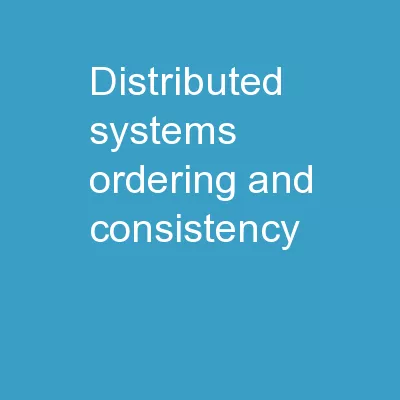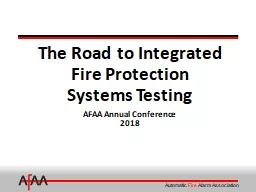PDF-DieCast Testing Distributed Systems with an Accurate S
Author : yoshiko-marsland | Published Date : 2014-11-25
Vishwanath and Amin Vahdat University of California San Diego dguptakvishwanathvahdat csucsdedu Abstract Largescale network services can consist of tens of thou
Presentation Embed Code
Download Presentation
Download Presentation The PPT/PDF document "DieCast Testing Distributed Systems with..." is the property of its rightful owner. Permission is granted to download and print the materials on this website for personal, non-commercial use only, and to display it on your personal computer provided you do not modify the materials and that you retain all copyright notices contained in the materials. By downloading content from our website, you accept the terms of this agreement.
DieCast Testing Distributed Systems with an Accurate S: Transcript
Download Rules Of Document
"DieCast Testing Distributed Systems with an Accurate S"The content belongs to its owner. You may download and print it for personal use, without modification, and keep all copyright notices. By downloading, you agree to these terms.
Related Documents

